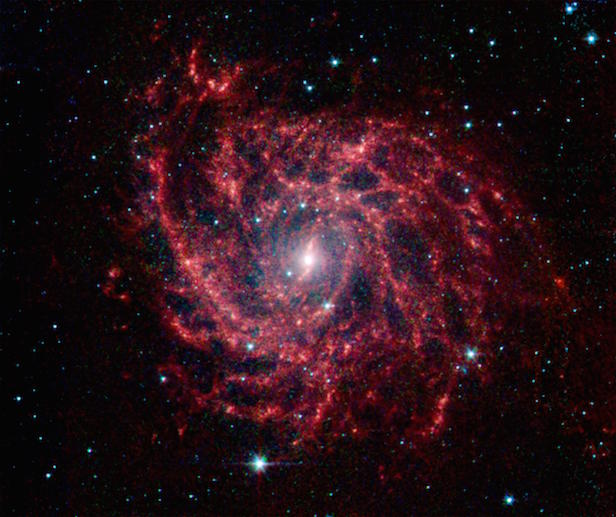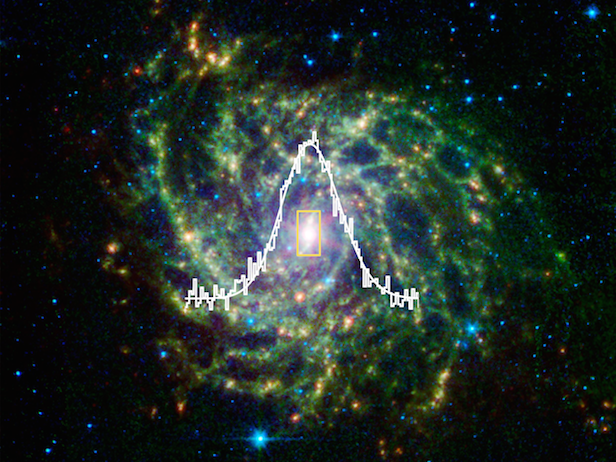How astronomers analysed star formation in a galaxy’s nucleus
With all that gas in the galactic nucleus, shouldn’t stars be made faster?

Taken with NASA’s Spitzer Space Telescope, this infrared image of IC 342 emphasises the dust trails spiralling around the centre. Image credit: NASA/JPL-Caltech
Astronomers went to the stratosphere to observe the relatively nearby galaxy IC 342 using NASA’s Stratospheric Observatory for Infrared Astronomy (SOFIA). After studying the molecular clouds that surround the nucleus, the results concluded that stars already created heat a large percentage of gas, which is similar to our Milky Way. The remaining gas is cold and dense, capable of star formation.
IC 342 is an intriguing galaxy, because it is a similar size to the Milky Way, the way it is positioned means we see the galactic face and all its glory. It’s also relatively nearby, located just 13 million light years away. The only challenging aspect of this galaxy is it lies behind the gas and dust of our own galactic plane, making it harder to study with optical ground-based telescopes. This is why astronomers from Germany and Holland had to use SOFIA to collect far-infrared data of the galaxy, as infrared will penetrate through the clouds of interstellar dust in our Milky Way.
It is the central molecular zone (CMZ) of IC 342 the astronomers wanted to investigate, because this is the dense cloud surrounding the galactic core where stars are being formed constantly. Aboard SOFIA was the far-infrared instrument, the German Receiver for Astronomy at Terahertz frequencies (GREAT), which collected spectroscopic data vital to study the CMZ. More specifically, it was two spectral wavelengths they were studying, 158 microns and 205 microns.

This Spitzer infrared image of IC 342 is overlaid with a yellow box, singling out the specific area astronomers were studying. Image credit: Röllig et al.
The 158-micron spectral line is ionized carbon, and indicates the presence of a cold, dense gas cloud (the ideal requirements needed for star formation), or it can indicate a hot gas cloud irradiated by young stars. The 205-micron spectral line is exclusively emitted by hot gas around young stars. By comparing the strengths of these two spectral lines, whether the cloud is hot or cold can be determined, which will infer the rate of star formation.
The verdict was that most of the gas in the CMZ was ionized by young stars heating up the surrounding cloud, where as the cold gas was found in the outer regions. These results not only tell us a lot about the centre of IC 342, but we can also relate these results to how the centre of our Milky Way acts.
Keep up to date with the latest space news in All About Space – available every month for just £4.99. Alternatively you can subscribe here for a fraction of the price!




